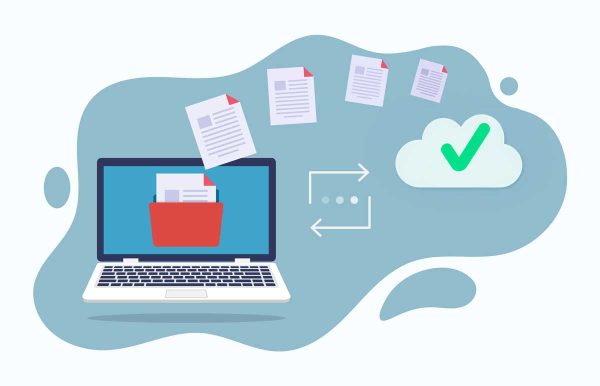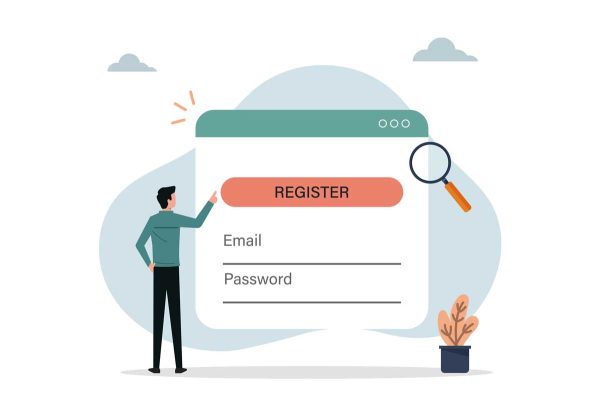Ransomware protection for OKC businesses

Every business, regardless of its size, faces cybersecurity threats—but ransomware stands out as one of the most devastating. It’s fast, it’s costly, and it can bring your operations to a halt.
For small and mid-sized companies, such disruption can be challenging to recover from. One day, everything’s fine; the next, you’re locked out of your data with a ransom note staring you in the face.
And in a connected business community like ours, where so much depends on reputation and relationships, the effects of a cyberattack can spread quickly. Protecting your business from ransomware isn’t just an IT decision—it’s a business survival plan.
What ransomware actually does
Ransomware is malicious software that encrypts your data and demands payment to unlock it. The problem is, paying the ransom doesn’t guarantee you’ll get your files back—or that your stolen information won’t be sold or released later.
Attackers often use two tactics:
- Encryption attacks: They lock you out of your own systems until you pay a ransom.
- Exfiltration attacks: They steal data first, then threaten to release it if you don’t comply.
Even if you do pay, the damage isn’t just financial. Your business could lose customer trust, face downtime, or even shut down entirely while trying to recover.
How ransomware gets in

Most ransomware attacks start with something deceptively simple—an email link, a file download, or a fake website.
The most common entry points include:
- Phishing emails disguised as invoices or legitimate requests
- Compromised ads or websites that trigger downloads
- Infected attachments that launch malware when opened
- Outdated software or weak passwords that let attackers in unnoticed
What makes ransomware so dangerous is that it often hides quietly for weeks or months before it’s activated. By the time you see a ransom message, the attacker may have already been watching your systems for a long time.
Why small businesses are prime targets
It’s a common misconception that cybercriminals only go after large corporations. In reality, smaller companies are often the easiest targets.
Here’s why:
- They typically have fewer cybersecurity defenses in place.
- They rely on outdated systems or unpatched software.
- They may not have dedicated security staff watching for threats.
- They’re more likely to pay the ransom just to get back to work.
For a small company, the impact can be devastating. One business in a nearby town lost decades of customer data and eventually closed after an attack. They lacked proper backups and monitoring in place. And unfortunately, stories like that aren’t rare—they just don’t make the news.
The hidden cost: reputation and trust
Recovering from ransomware isn’t just about restoring files. It’s about rebuilding confidence—both inside and outside your company.
Clients expect your systems to be safe. When their data is compromised or your operations shut down, they remember. And in a relationship-driven community like ours, that memory spreads fast.
Protecting your reputation is part of protecting your data. The businesses that stay ahead of these threats are the ones people trust most when it matters.
Building layers of defense
No single tool can stop every attack, but a layered security strategy dramatically lowers your risk. Think of it like locking multiple doors between your information and potential attackers.
A strong ransomware defense plan should include:
- Advanced email security to block phishing attempts
- Employee training to help staff spot suspicious messages
- Web filtering that blocks known malicious sites
- Regular software updates and patches to close vulnerabilities
- Endpoint protection that monitors for unusual behavior
- Offsite and cloud backups that attackers can’t encrypt
These tools and habits work together to create a safety net. Even if one layer fails, the others help contain the threat before it spreads.
Why backups are your last line of defense

If ransomware ever strikes, backups can make the difference between a bad day and a total disaster.
Having secure, versioned backups stored offsite or in the cloud ensures you can restore your systems without paying the ransom. The key is to separate those backups from your main network—if they’re connected, attackers can encrypt them too.
Equally important is testing those backups regularly. Many businesses assume their systems are backed up correctly until the moment they try to recover—and realize the files are outdated or incomplete.
Managed IT providers handle this for you automatically, verifying that backups are running and can be retrieved. That level of oversight gives you peace of mind and significantly reduces your recovery time in the event of an incident.
Managed cybersecurity and monitoring
While antivirus software is a good start, it’s no longer enough. Ransomware evolves constantly, and traditional tools often fail to detect new variants in time.
That’s where managed cybersecurity services make a difference. Instead of reacting to threats after the fact, your IT team is constantly watching for suspicious behavior—before damage occurs.
Managed security often includes:
- 24/7 threat monitoring and response
- Behavior-based alerts for unusual activity
- Automatic updates for security tools
- Real-time isolation of infected devices
In practical terms, that means if something strange starts happening on your network—say, a file suddenly encrypts or a process runs outside regular hours—your security team gets notified instantly and can act before the problem spreads.
Employee awareness is the human firewall

Technology alone can’t stop every attack. People are often the weakest link in cybersecurity—and the first line of defense.
The good news? Awareness training works. When employees understand what to look for, they can identify potential issues before they cause damage.
Simple habits can make a huge difference:
- Don’t click links or open attachments from unknown senders.
- Verify payment or account change requests directly with the person who sent them.
- Use strong, unique passwords and enable multi-factor authentication.
- Keep work and personal browsing separate—especially on company devices.
Building a culture of security transforms your team into an asset rather than a liability.
Preparing for the worst—without fear
Even with the best defenses, no system is 100% immune. What separates resilient businesses is how quickly they recover.
Having a clear incident response plan ensures that everyone knows what to do in the event of an incident: who to contact, how to isolate infected systems, and how to communicate transparently with clients or partners.
The goal isn’t just to prevent attacks—it’s to minimize damage and keep your business moving. When everyone knows the plan, recovery is faster and less chaotic.
Protecting what matters most
Ransomware isn’t going away anytime soon. The best defense is a combination of technology, training, and trusted support that keeps you ready for anything.
Managed IT services take the burden off your shoulders by handling the monitoring, backups, and recovery planning that most businesses struggle to maintain on their own.
When you invest in prevention, you’re not just protecting your data—you’re also protecting your clients, employees, and reputation.
Contact YourIT today to strengthen your defenses and gain peace of mind knowing your business is protected from ransomware and other modern cyber threats.
